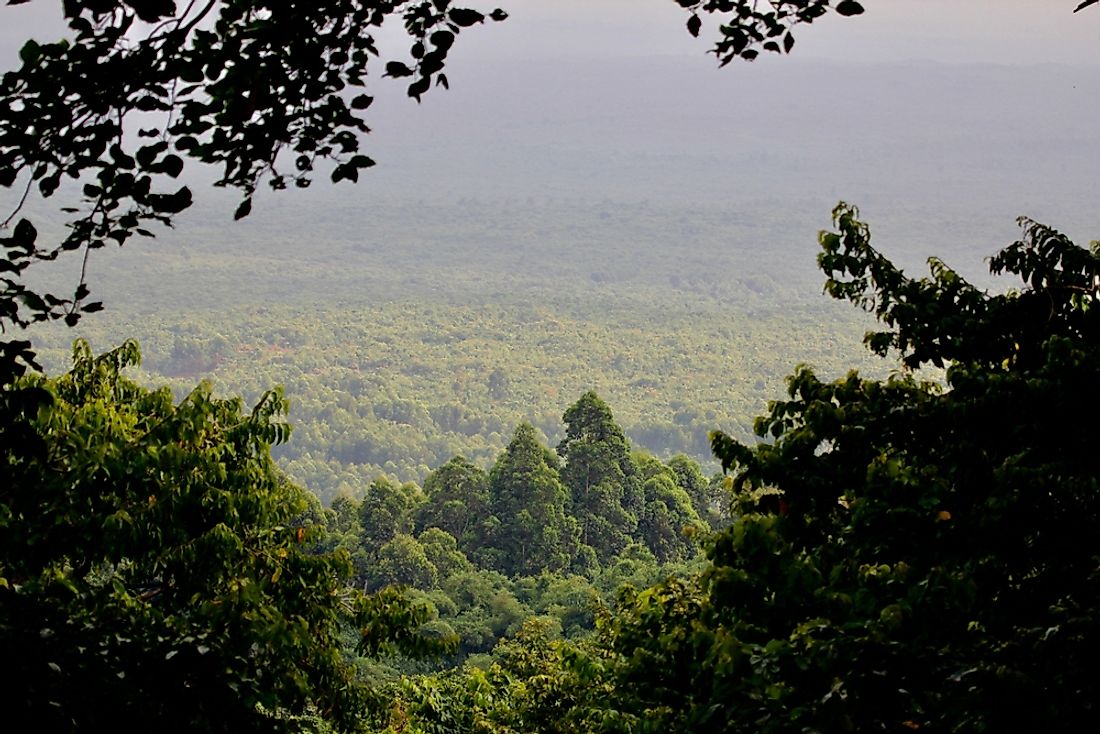What Are The Biggest Industries In The Democratic Republic Of The Congo?

The Democratic Republic of Congo (DRC) is a country located in Central Africa. Its capital city is Kinshasa. DRC is the second largest country in Africa after Algeria with a total land area of 905,568 square kilometers. It is bordered by South Sudan, Tanzania, Rwanda, Burundi, Uganda, Angola, Zambia and the Central African Republic. The country has a population of about 91 million people.
It is believed that the net worth of the DRC in terms of mineral resources is US$24.5 trillion. Some of these minerals include copper, cobalt, silver, gold, diamonds, zinc, uranium, tin, manganese, tungsten and cadmium. DRC is popular worldwide for being the largest producer of copper and cobalt. It is also the world’s second largest producer of diamonds. DRC also has hydrocarbon reserves estimated to be around 1.6 billion barrels of oil and 90 billion cubic meters of natural gas. The minerals found in DRC have been underexploited for several reasons such as frequent civil wars, political instability, lack of proper infrastructure, as well as corruption and mismanagement of public funds. Nonetheless, the mineral resources have contributed greatly to the economy of the county. The GDP of the DRC as of 2018 was around US$77.486 billion.
The Mining Industry
The rich deposits of minerals in the DRC have attracted a lot of foreign investments to the mining industry. Consequently, several mining companies have been set up and operate across the country. The Kinsevere mine, located in the north of Lubumbashi in the Katanga province, is one of the largest copper mines in the world. In 2017, the company led the mining of 80,186 tonnes of copper resulting in three consecutive years of producing over 80,000 tonnes of the mineral. The mining sector accounted for an estimated 11.5% of the GDP of the DRC in 2012. The top mineral exports as at 2017 were refined copper (US$1.9 billion), copper ore (US$960 million), cobalt oxides and hydroxides (USD$721 million), and cobalt ore (US$512 million).
Agriculture Sector
The agricultural industry is a major sector in the economy of DRC as it contributes about 21.6% of the value of the country’s GDP. The agricultural sector also employs about 70% of the country’s population. The country has the second largest rainforest in the world covering very fertile lands. Over 80 million hectares of DRC’s land is arable with about 4 million under irrigation. The major cash crops grown in DRC are cocoa, coffee, cotton, palm oil, tea, rubber, sugar cane, corn, peanuts, and cinchona tree. On the other hand, the crops cultivated for local consumption include maize, rice, potatoes, cassava, plantains, and cashew nuts. Agriculture is a fast-growing industry which is responsible for the mass production of food consumed by the citizens of DRC. Due to its significance to the economy of the country, the government of DRC has launched a program focusing on the training of farmers, storage of farm produce, and the marketing of agricultural produce. It also collaborates with other non-governmental organizations to educate farmers on modern farming methods in order to increase crop production.
Fishing Sector
Many rivers and lakes are used for fishing purposes. Fishing in the DRC is divided into two: marine and inland fishing. The country has a very small coastline meaning that marine fishing is only practiced by the artisanal fishermen. Marine fishing contributes to around 4% of the total national fish harvest. Fishing in the lakes and rivers within the country form the inland fishing. Some of these lakes are Lake Tanganyika, Lake Kivu, Lake Edward, Lake Albert, the Congo River Basin, Lake Tumba, and Lake Mai Ndombe. Marine, lake, and river fishing, as well as aquaculture, contributes 12% of the GDP of DRC. The total fish production is estimated to be more than 240,000 metric tonnes per annum. The inland fishing contributes 96% of the annual fish caught. According to the Food and Agricultural Organization’s (FAO) report of 2009, 39.6% of the total animal protein consumed in DRC came from fish. The fishing sector has also created over 700,000 jobs either directly or indirectly.
Manufacturing Industry
The manufacturing industry in DRC is not very well developed. However, most of the factories in the country are located in urban centers. The manufacturing industries mostly deal with agricultural products such as sugar, flour, and beverages. Other industries manufacture beer, textile, and clothing, footwear, processing of wood and paper, industrial manufacture of chemicals, cigarettes, glassware, nails, and variety of metal furniture, cement, bricks, and petroleum refining.











